|
HOME: www.hiltonpond.org |
|||
THIS WEEK at HILTON POND Subscribe for free to our award-winning nature newsletter (Back to Preceding Week; on to Next Week) |
2016: On 1 January 2016 we begin our 35th year of environmental education, field research, and conservation activities at Hilton Pond Center for Piedmont Natural History. We first set foot on the property with a realtor in late December 1981, made an offer to buy in January 1982, closed in March (when seven-year old Billy Hilton III helped us put out a few bird feeders and plant Red-tips along the road and northern property line), and moved in three months later--in time to set a couple of traps and catch our first birds for banding on 28 June (which we observe as the Hilton Pond Center's actual anniversary).
All text, maps, charts & photos © Hilton Pond Center That first banded bird at the Center was a reproductively active female Common Grackle (above) with a brood patch. Since then a LOT of birds have passed our banding table--more than 63,400 from 126 species--and our 11 acres have morphed from a grassy old farm and open pond to a wooded nature haven with an impoundment that itself has changed. As 2016 continues, we'll take time to reflect on this 35th year and share some significant things we've learned about local flora and fauna. We hope you'll join us in celebrating what we believe is a significant milestone--three and a half decades of continuous natural history research on one small piece of the Carolina Piedmont. We're deeply appreciative that many of you have supported our work through the years with financial gifts that allow us to accomplish our intertwined missions. As we enter 2016 we encourage everyone to get involved in nature activities this year. If you're able-bodied, take regular hikes at your local park and join a local birding or conservation organization. All text, maps, charts & photos © Hilton Pond Center 1 JANUARY 2016
All text, maps, charts & photos © Hilton Pond Center The new year began as it should at Hilton Pond Center, with the first bird captured shortly after sunrise. If you follow our work, you'll not be surprised our first banded bird of 2016 was an adult female American Goldfinch (see photo above). After all, AMGO are our most commonly banded birds with 9,973 individuals captured since 1982. As cold weather finally arrives we predict goldfinches very soon will be our first species to reach the 10,000 mark. Only 27 to go!
All text, maps, charts & photos © Hilton Pond Center Later that day we banded a Chipping Sparrow (above), a species we see few of around the Center's feeders this early in winter. Our big rush of chippies comes in March and then tapers off quickly, although we know from nests in our Eastern Red Cedars the species breeds locally.
All text, maps, charts & photos © Hilton Pond Center We closed out New Year's Day with a male House Finch (above). Admittedly, just three banded birds was not a bombastic way to start 2016--especially after none were banded the following day and just a Ruby-crowned Kinglet and another Chipping Sparrow were trapped on 3 January. 4 JANUARY
All text, maps, charts & photos © Hilton Pond Center PERSONAL NOTE: On 4 January the resident master bander (Bill Hilton Jr.) arose early, not to band but to head for a Rock Hill SC hospital for carpal tunnel surgery on his dominant right hand, i.e., the one used for banding. After missing substantial time to dual knee replacement surgery the previous summer this bander was not pleased to be under the knife again, but it was a necessary evil. One possible cause of the syndrome was that arm restraints required during that unexpectedly lengthy (4.5-hour) double knee procedure had damaged a nerve in the wrist; normal post-surgical swelling is also known to have this effect. (Interestingly, swelling that accompanies pregnancy sometimes causes carpal tunnel in pregnant women and then disappears soon after childbirth.) Intense wrist and hand pain suffered right after knee surgery went away in a week or so but numbness continued in thumb, index, middle, and ring finger; an EMG (electromyogram) indicated severe carpal tunnel syndrome. This would only worsen without another surgery that shut the door on banding and computer work for a couple of weeks. 8 JANUARY
All text, maps, charts & photos © Hilton Pond Center Despite an incapacitated wrist, we tried to make nature observations from various vantage points in the Center's old farmhouse, relying on family members to fill the feeders and set up our camera. We had come to the conclusion good numbers of American Goldfinches and House Finches had finally descended upon Hilton Pond Center this winter but that Pine Siskins that inundated us a year ago were nowhere to be seen. However, on the afternoon of 8 January a solitary siskin arrived (see photo above) to compete with larger goldfinch flocks also attracted by our dependable (but expensive) cornucopia of sunflower seeds. It will be interesting to see if thin-billed PISI numbers increase as cold weather drags on. Even if more arrive we seriously doubt we'll get anywhere near our record-smashing 780 siskins banded in the immediately preceding winter of 2014-15. All text, maps, charts & photos © Hilton Pond Center 13 JANUARY
All text, maps, charts & photos © Hilton Pond Center One bad thing about outdoor woodpiles like those we have at Hilton Pond Center: Brown Marmorated Stink Bugs, Halyomorpha halys, sometimes hibernate between the logs, and sometimes--like today--you bring them and their stinkiness inside with the firewood. Such has been the case most days this month when we have to examine each stick of wood to see if a stink bug is clinging. BMSB--a lot shorter to write than their full name--are an invasive species that arrived from east Asia in about 1998. Since then BMSB numbers have exploded in the northeastern U.S. as the prolific insect has expanded its range into the Carolinas and beyond. In some locales BMSB gather by the thousands in autumn and enter homes other buildings in search of winter warmth. Unfortunately, they deserve their name and produce a repulsive odor that can linger for days.
All text, maps, charts & photos © Hilton Pond Center Several stink bug species are native, including the Southern Green Stink Bug, Nezara viridula (above). They, too, produce an odor, but to most folks it's neither as powerful or as long-lasting. Both these stink bug species tend to hibernate, so we've encountered both hidden in our firewood pile. Odoriferous or not, since they're native we try to flick off the native "greenies" before hauling firewood indoors. Those brown ones, however, often cling tightly to the bark and probably get a little warmer than they'd like as we load the ol' woodstove. 14 JANUARY
All text, maps, charts & photos © Hilton Pond Center We caught a fleeting glimpse of Hilton Pond Center's first adult male Purple Finch of 2016 (above) at a feeder on the morning of 14 January. Through the years we typically have not gotten our first PUFI until after Christmas, with the extreme earliest date being 19 Oct 1991. One way to differentiate Purple Finches from House Finches is the latter appear to have a somewhat flattened head while PUFI tend to have a crest. Purple Finches don't often raise their crest as high as the bird in our photo, but this particular individual might have been aggravated by the photo-blurred House Finch (lower left) trying to land on the feeder tray. 18 JANUARY
All text, maps, charts & photos © Hilton Pond Center Hilton Pond Center's first Yellow-bellied Sapsucker of 2016 showed up on the morning of 18 January, not lapping sap but stealing sunflower seeds from a big tube feeder tray (above). This individual was an immature (second-year) female; males have red throats to match crown and forehead. What we like about this particular photo (taken through an insulated glass window) is you can actually see her yellow belly--a field mark usually hidden by the woodpecker's trunk-hugging behavior. On 14 January they removed stitches applied during the 4 January carpal tunnel surgery (see note above). The hand is still sore and weak but seems to be getting better slowly, so on 18 January we decided to give bird banding a try. It wasn't easy to grip the pliers, close the bands, OR even hold the pencil for recording data, but we managed to use the other hand well enough to capture, band, and document 14 American Goldfinches and release them unharmed. Of special interest this day was the recapture of a female AMGO banded here at Hilton Pond Center as after-second-year on 18 February 2010, making her a venerable after-eighth-year individual in 2016. Amazing longevity for such a small bird. 19 JANUARY 'Twas 17° F at the Center just after dawn on 19 January. That qualifies as "cold" most places, including the Carolina Piedmont. Facultative migrants that might not migrate every winter are being pushed south by the weather, and--not coincidentally--the seed feeders have gotten very busy AND we banded the first Pine Siskin of the winter this morning.
All text, maps, charts & photos © Hilton Pond Center The 19th of January actually was a Big Day at Hilton Pond Center. Not only did we capture 30 American Goldfinches, but one was the 10,000th of its species to be banded--a second-year-male in winter plumage (see photo above). AMGO are the first to reach this lofty total and are ahead of House Finches at 9,601. This calls for a celebration, don't you think? 24 JANUARY
All text, maps, charts & photos © Hilton Pond Center Although a January snowstorm slammed much of the eastern U.S. including South Carolina's Piedmont Region, we missed the whole shebang. We were in sunny (but not necessarily warm) Titusville FL for the annual Space Coast Birding & Wildlife Festival, giving presentations about our Operation RubyThroat hummingbird research in Central America.
All text, maps, charts & photos © Hilton Pond Center Before leaving for the airport mid-morning on 20 January we filled all the big seed feeders; upon returning late on the evening of the 23rd there were perhaps two inches of ice-covered snow on the ground and no sunflower seeds to be seen. Hilton Pond Center apparently dodged the bullet weather-wise, with no lost power and no big branches snapped from trees. First orders of business upon our return: Fill the feeders, snap a quick photo of Jonquils in the snow, and shoot the obligatory landscape panorama of Hilton Pond robed in white and thinly iced over. 27 JANUARY
All text, maps, charts & photos © Hilton Pond Center With an overnight low of 45° on 26-27 January at Hilton Pond Center, only a few vestiges remain of the 2-3" of ice-covered snow that feel the preceding week. A few protected patches were all on leaf-insulated ground along the shaded north sides of big trees such as a big Southern Red Oak (see photo above). Note also the old Virginia Creeper vine draped diagonally across the trunk AND the vertical freeze scar just behind it. Those are warty-barked Sweetgum saplings on the left. On 27 January we banded our 100th American Goldfinch of the year at the Center, notwithstanding having lost the first two weeks of the month to carpal tunnel surgery and devoting most of the just-finished week to happily lecturing about our Neotropical hummingbird research at the annual Space Coast Birding & Wildlife Festival in Florida. 28 JANUARY
All text, maps, charts & photos © Hilton Pond Center Coyotes were singing on the evening of 28 January around and maybe even on Hilton Pond Center. We've never actually spotted one of these wild dogs on the property--or captured an image of one with a trail cam--but they've almost certainly set paws on our land. (That's a public domain file photo above.) Despite the lack of local observations, we did discover a rather large roadkill Coyote about a mile from the Center's old farmhouse. On the 28th one family group seemed to be howling from an expansive cattle farm that adjoins the Center, possibly because cows have been dropping calves recently and leaving energy-rich afterbirth. Whether Coyotes actually kill calves has been debated widely; if they do it's probably only if the mother lets her newborn calf wander off at night. Our first local Coyote observations (sound only) came about ten years ago; back then there was only only one pack, now there seem to be three. As these top-of-the-food-chain predators arrived, we had a quick decline in local populations of Wild Turkeys and Red and Gray Foxes. On top of that, we had to quit running mist nets on winter nights trying to catch Northern Saw-whet Owls for banding. We weren't afraid of the Coyotes, but we were certain they'd snatch owls from nets before we could extract them. 29 JANUARY
All text, maps, charts & photos © Hilton Pond Center On 29 January at Hilton Pond Center we caught and banded a particularly bright male American Goldfinch; that's him in the photo above. By midwinter, most of his brethren are olive rather than yellow. We knew this bird was in at least his third year (after-second-year) because of the bright yellow shoulder; hatch-year and second-year males have mottled salt-and-pepper shoulders without much color. Despite bright hues, this bird has lost his black forehead that will be regained during the breeding season; likewise, his dark bill will again turn orange.
31 JANUARY At Hilton Pond Center we maintain and constantly update inventories of all flora and fauna we encounter on the 11-acre tract. As you might guess, one of our favorite tally sheets documents birds that land on the property or fly overhead, thus becoming part of the Center's official Bird Checklist. Birders are notorious for keeping all sorts of lists, but we essentially limit ours to just four.
All text, maps, charts & photos © Hilton Pond Center Start your 2016 Yard List today and--if you're into eBird--submit your observations daily as part of the growing body of citizen scientists who make important contributions about avian life across the globe. At the Center we've encountered the following 26 species so far in 2016--about 15% of 171 seen since 1982. Almost all were observed through the windows of our old farmhouse, and ten species were captured for banding:
NOTE: All the Center's Plant & Animal Inventories are accessible on-line. These include our 35-year Checklist of Birds. All text, maps, charts & photos © Hilton Pond Center 
Checks can be sent to Hilton Pond Center at: All contributions are tax-deductible on your |
|---|
|
"This Week at Hilton Pond" is written and photographed by Bill Hilton Jr., executive director of Hilton Pond Center for Piedmont Natural History
|
|
|
Please refer "This Week at Hilton Pond" to others by clicking on this button: |
Comments or questions about this week's installment? Send an E-mail to INFO. (Be sure to scroll down for a tally of birds banded/recaptured during the period, plus other nature notes.) |


 If you're a shut-in, get some help setting up a wildlife feeding station where you can watch wonders from your porch or window. Report your observations through eBird or other citizen science venues such as the Great Backyard Bird Count in February. And no matter who or where you are, introduce a young person to the wonders of nature. Nothing is more rewarding for a naturalist than watching those eyes light up when a child connects with nature for the first time--a connection that can make every young person a better custodian of the natural world of which we all are still a part. Bringing kids to nature is just one of the things we do at and through Hilton Pond Center, and we hope you do, too.
If you're a shut-in, get some help setting up a wildlife feeding station where you can watch wonders from your porch or window. Report your observations through eBird or other citizen science venues such as the Great Backyard Bird Count in February. And no matter who or where you are, introduce a young person to the wonders of nature. Nothing is more rewarding for a naturalist than watching those eyes light up when a child connects with nature for the first time--a connection that can make every young person a better custodian of the natural world of which we all are still a part. Bringing kids to nature is just one of the things we do at and through Hilton Pond Center, and we hope you do, too.
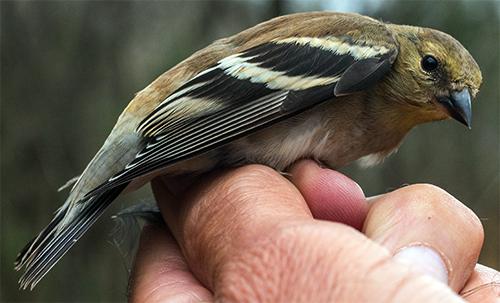

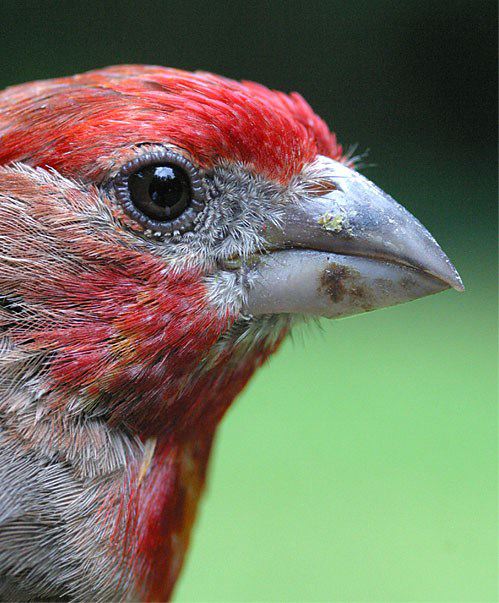
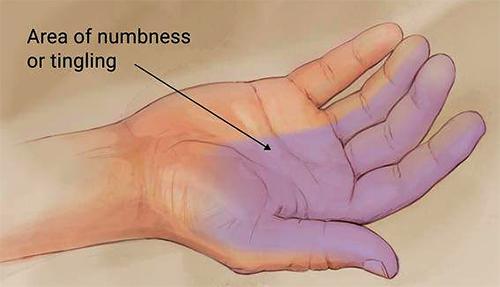
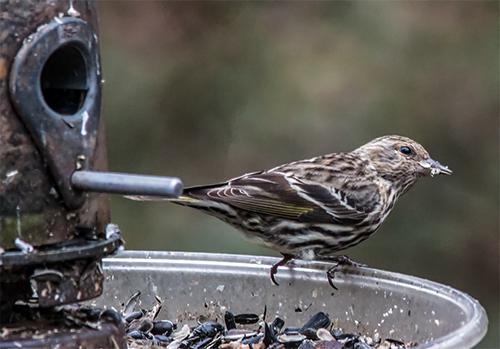
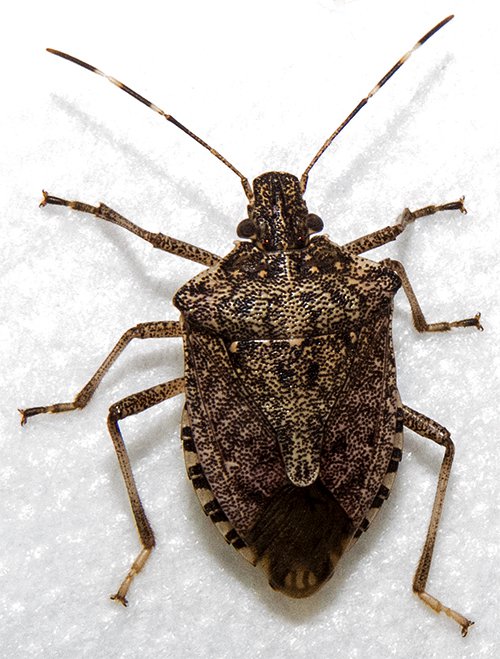

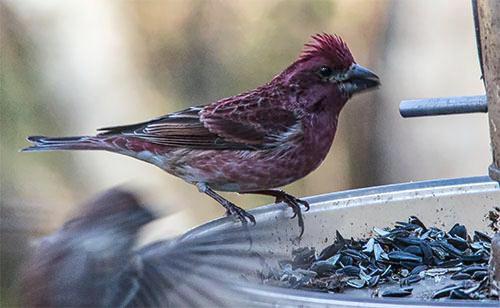
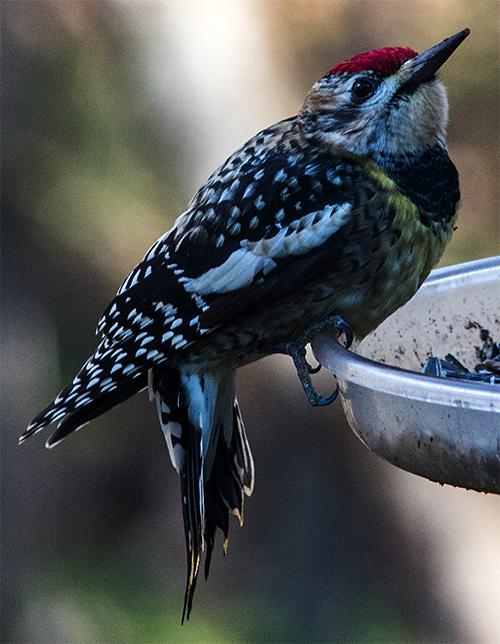


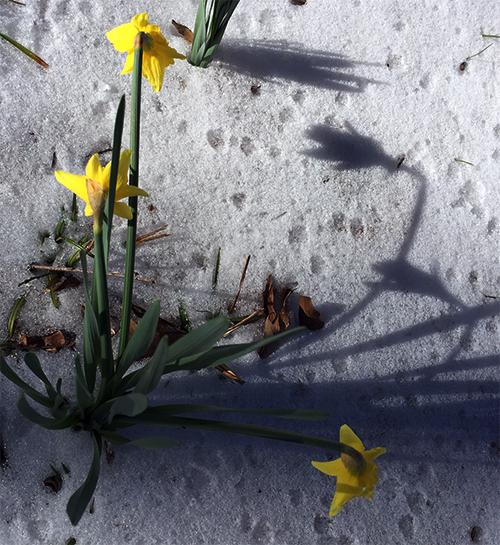
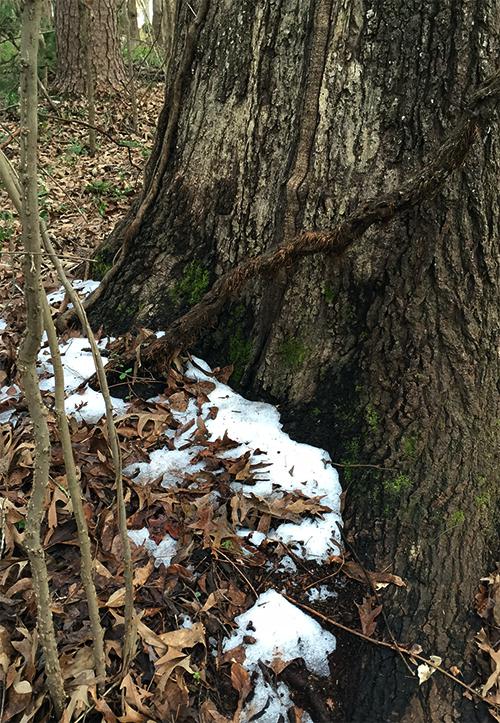
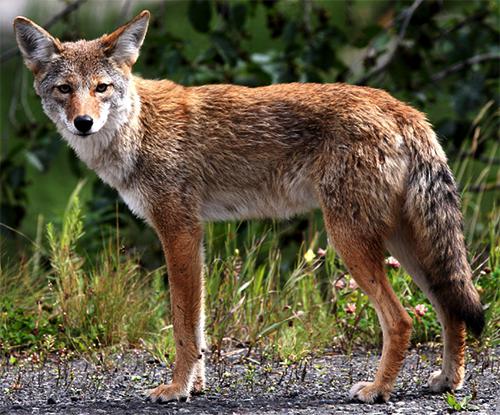
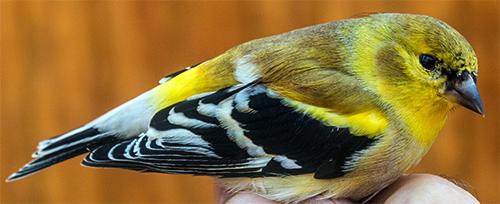
 One curious thing: If you look at snow-scene Christmas cards
One curious thing: If you look at snow-scene Christmas cards 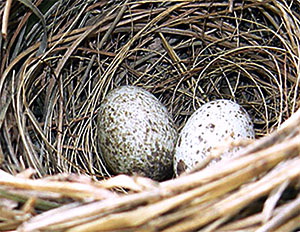 There's a comprehensive list of all birds observed since 1982--a list that has an impressive 171 species. Then there's our banding list with 126 species, and our list of birds known to breed on site
There's a comprehensive list of all birds observed since 1982--a list that has an impressive 171 species. Then there's our banding list with 126 species, and our list of birds known to breed on site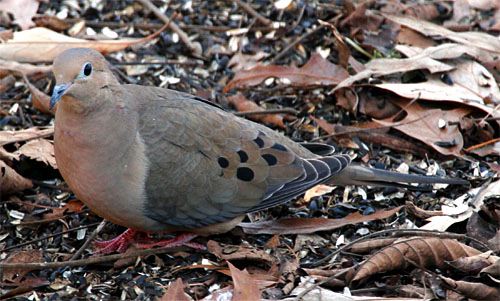








 Oct 15 to Mar 15:
Oct 15 to Mar 15: